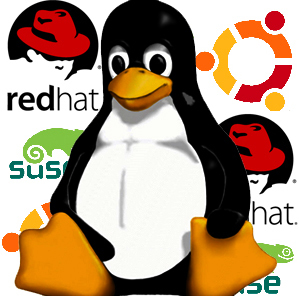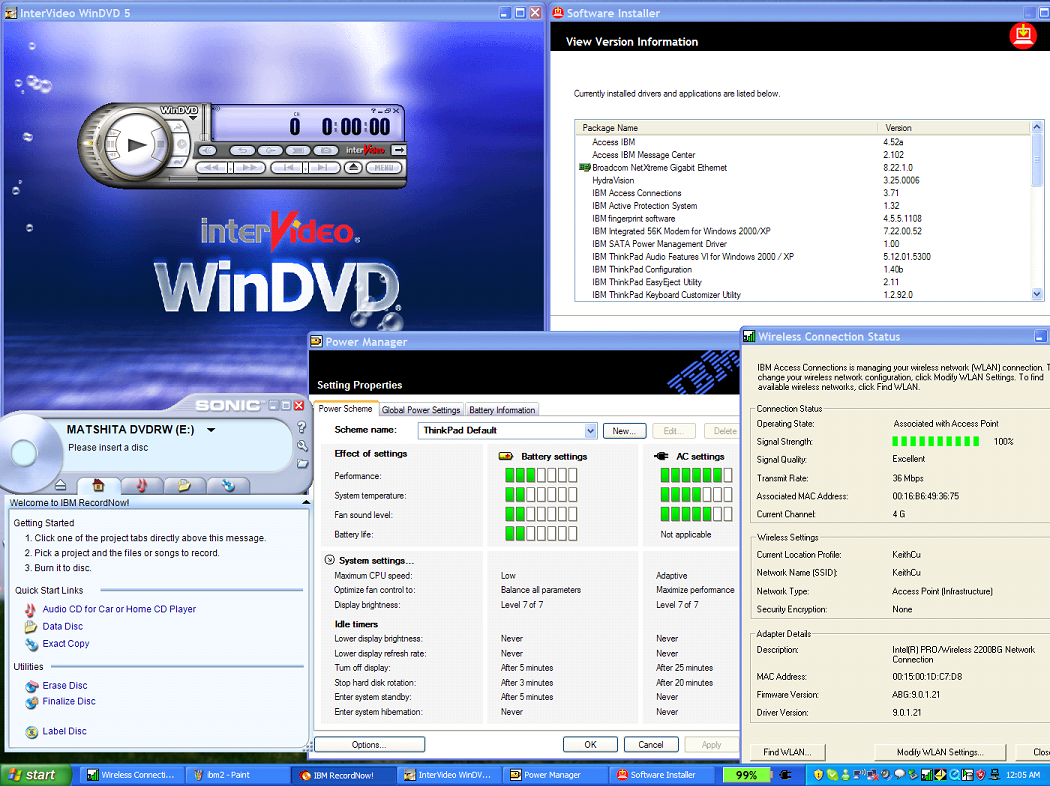Linux Needs to Master Hardware to Beat Windows
Today we have Keith Curtis joining us for a discussion on Linux. Curtis spent 11 years as a Software Design Engineer at Microsoft before examining Linux and the open source side of things, which resulted in a change of perspective and a published book.
Intro
I knew very little about free software when I left Microsoft. I think any of my fellow former employees who bothered to learn what all I did would conclude that free software is superior, and that its biggest challenges are ignorance and a slight lack of execution. I say “slight” because the free software army is already an army of millions.
It is why I have written a book that talks about things like why it is cheaper to write drivers for Linux, but it also documents the biggest reasons for why it hasn't succeeded on the desktop yet. And the biggest challenge right now for Linux on the PC is hardware. In principle, none of your software can work until all of your hardware works.
PC Hardware
We love Linux, and we're doing our best to support the Linux community. we see the Linux desktop as a customer-driven activity. If customers want it, well, Dell will give it to them. —Michael Dell
Michael Dell's quote demonstrates that he doesn't consider the situation where people aren't running Linux on his hardware because it doesn't work! I have a Dell Vostro laptop that doesn't have a Linux driver for wireless Internet. If I can't take the computer to a coffee shop and surf the web, it is useless. I've thought about putting a bullet through the laptop and mailing it back. Even laptops by Dell that ship with Linux still contain proprietary drivers, drivers that aren't in the kernel, and so forth so it seems clear that Dell management doesn't understand Linux yet. Dell also inexplicably has 30 models of laptops, each with 30 options, so it might just be a general case of corporate cranial-rectal inversion.
Overall, PC hardware support in Linux is generally in good shape, and has improved a lot in the years since I first started using it. I believe it mostly requires that we continue to press on, working through the chicken and egg issue where hardware vendors are reluctant to support Linux until it has more users, but users won't run Linux if it doesn't fully support their hardware.
Get Tom's Hardware's best news and in-depth reviews, straight to your inbox.
I singled out IBM in the OS chapter in my book, but many other hardware companies are under-investing in free software even though public statements by their VIPs suggest that they believe in it. For example, Intel claims to be a strong supporter of Linux, but is doing only a decent job in its support of Linux drivers. An Intel engineer told me at a Linux conference that their Linux efforts are just 1% of the manpower that their Windows efforts receive. Doubling their Linux development team would cost less than .1% of their total R&D. Intel is under-investing in Linux not because they can't afford to increase costs by .1%, but because they're suffering from Stockholm syndrome!
If Linux could recognize all of your hardware, all of your free software would run; if there is a bug anywhere in your hardware or device drivers, then it is quite possible that no software will run. Therefore, step one of World Domination by Linux is World Installation. The software incompatibilities will be better solved as soon as the hardware compatibilities become better solved. Therefore, it is the kernel that is currently holding up the PC revolution.
I've installed Linux on a number of computers and found several problems: the fingerprint reader and other optional hardware often doesn't work, the computer doesn't always come out of sleep, sometimes the modem drivers aren't available, etc. None of my particular problems were a barrier, but others aren't so lucky. I recently tried to upgrade my dad's eMachines computer from Ubuntu 6.06 to 8.10 but the install failed because of APIC incompatibilities. There are many long discussion threads on the Internet about Linux hardware incompatibilities.
Linus has overseen the design of an incredible platform, with support for more hardware than any other OS ever, and his kernel is the best piece of large free code ever written, but it needs further work. One of the biggest challenges I see for the kernel development community is a lack of respect for their buglist, the most important metric describing the state of the kernel.
Lower Development costs
It is much less expensive for hardware vendors to support Linux. If you want to build a device driver, a great place to start is by looking at existing shipping device drivers, an opportunity that Linux offers to everyone. A proprietary “Device Driver Toolkit” with its sample code is never as good as production code. Those expensive kits contain documentation, but not source code — so you sometimes have to guess at what is happening down below.
We find in Windows today that hardware manufacturers have duplicated a bunch of the functionality Windows provides but doesn't quite fit their needs. For example, IBM includes its own applet and status icon for wireless Internet, so Windows XP on IBM hardware has two. Presumably they weren't satisfied with the features Windows provided, and weren't able to fix them. And so they had to build new applets from scratch! This is also what gives Windows a feeling of a jumble of components slapped together.
Here are five of the 100 applets IBM adds to Windows:
Building all of these applets, designing multilingual user interfaces, providing the means to install and configure, etc. is ten times more work than merely writing the device driver, leveraging other shipping drivers, and uploading it to the official codebase.
I had a Photodesk 7960 printer worked on Windows XP, but didn't work on Windows Server 2003 because the installation code crashed — which HP shouldn't be forced to bother with in the first place.
Outtro
For more perspective on Linux, free software and open source, check out "After the Software Wars."
You can get a free PDF download here.
You can also purchase a paper or Kindle copy from your nearest Amazon.
Those of you who have questions and comments that you wish to be answered and addressed can leave them in our comments section below, and we'll pass them on to Keith Curtis in a follow-up.
-
nevertell What we really need is a law- if you produce hardware, both linux, macOS and windows must support it as long as it's meant to be installed in an x86 machine.Reply -
kyeana What we really need is ATI linux drivers. If we could get that i would be very content.Reply -
Tyellock i think this is a step forward for the linux communityReply
http://developer.valvesoftware.com/wiki/Steam_under_Linux
its not perfect yet, but the exposure is starting -
False_Dmitry_II Heh, all the hardware in my FX-gateway gaming laptop works perfectly in linux (I dual boot it and Win7 Pro) Even the mute and volume controls work.Reply
Intel's wireless drivers in linux are almost the only ones that just straight up work.
ATI drivers are getting better and better for the HD series of cards. They've introduced some kind of aspect that's open but I haven't looked into it really. -
kyeana Tyellocki think this is a step forward for the linux communityhttp://developer.valvesoftware.com nder_Linuxits not perfect yet, but the exposure is startingReply
Personally i think WINE is more of a step backwords then anything. It opens the door for all sorts of windows attacks/virus's on a linux machine, and just further encourages developers to make windows applications, instead of native linux ones.
I'm not denying that windows emulation can be useful, however, the ideal solution would be to have native linux programs.
-
kyeana False_Dmitry_IIATI drivers are getting better and better for the HD series of cards. They've introduced some kind of aspect that's open but I haven't looked into it really.Reply
They may be getting better, but i have still been unable to get my desktop with 2 4850's running in arch linux. I have tried the open source radeon and radeonhd drivers with a million xorg.conf files, but to no avail (they are all super laggy, presumably because direct rendering isn't working). I'm down to the last string, hopping that enabling KMS will fix it. -
kyeana excalibur1814Ummm.."Linux Needs to Master Hardware to Beat Windows"Haven't we known that for years and years? Once Linux beats Windows we'll probably be back to square one. When everyone has Linux, 'who' is going to centrally provide security updates? Who's going to offer support when the mass cannot be bothered anymore as the tinkers have gone onto another OS as Linux would then be 'too commercial'.Ahh heck, let's just give away our free will and jump onto osxReply
Linux isn't meant to be an OS for everyone, and it isn't meant to replace windows. It is simply meant to be open source, so that you can do whatever you want with it. Some people may like this and switch to linux, while some would prefer having centrally provided security updates.
The problem right now is that even if people like the open source philosophy, they still require windows (for things like exclusive software, and driver support like this article mentioned). -
"Linux" doesn't need better hardware support, the damn vendors and hardware manufacturers need to open up their source code or write drivers for Linux. Also some distributions could include some more drivers but I'm happy with Ubuntu's driver setup.Reply
-
mlopinto2k1 Mastering hardware is one way to put it. Adobe needs to make photoshop for Linux. There needs to be pressure support for Wacom tablets. Then i'll switch.Reply



